The number of people reading books has decreased by 40% compared to 20 years ago.

Reading is a valuable activity that builds knowledge and has a positive impact on mental health, but a study conducted by researchers at University College London and the University of Florida found that the number of Americans who read regularly has declined by more than 40% over the past 20 years.
The decline in reading for pleasure over 20 years of the American Time Use Survey: iScience
Proportion of Americans reading for pleasure fell by 40% over 20 years | UCL News - UCL – University College London
https://www.ucl.ac.uk/news/2025/aug/proportion-americans-reading-pleasure-fell-40-over-20-years
The research team analyzed data from 236,270 Americans from the American Time Use Survey, covering the period from 2003 to 2023, to analyze trends in the percentage of people who read daily for personal purposes and the percentage of people who read daily with their children. The results revealed that the percentage of people who read for personal use (blue) peaked at 28% in 2004 and continued to decline at a rate of 3% per year, reaching 16% by 2023. The percentage of people who read with their children (purple) remained stable, at just 2% in 2023.
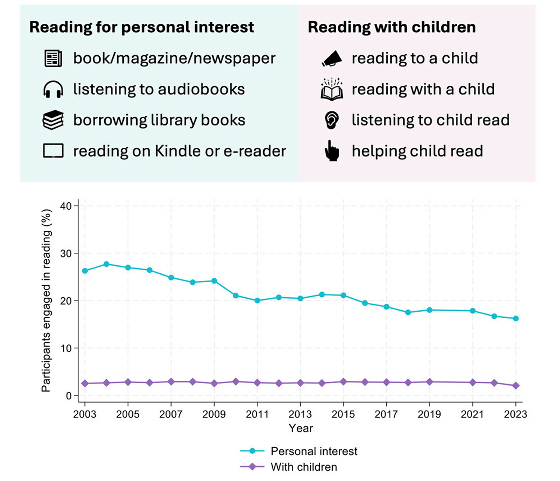
The research team also analyzed reading habits by demographic. The graph below shows the percentage of people with reading habits for 'men (orange)' and 'women (green).' We can see that women consistently have more reading habits.

Below is a graph dividing age into '15 to 24 years old (orange),' '25 to 65 years old (green),' and '66 years old and over (purple).' The declining trend among the elderly is noticeable.
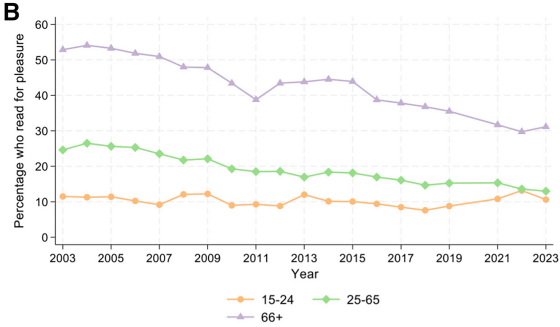
If we divide the races into 'White (orange),' 'Black (green),' 'Asian (purple),' and 'Other (pink),' it looks like this. The reading rate for Black people and other races is low.
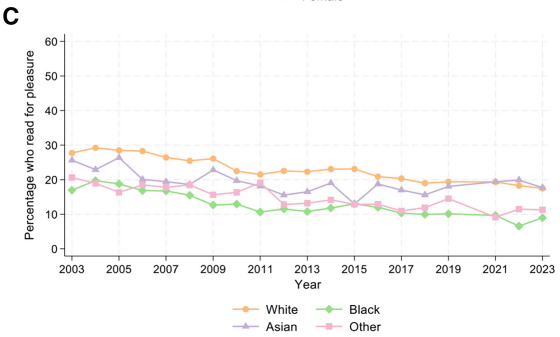
This graph breaks down educational background into 'high school graduate or below (orange),' 'college graduate (green),' 'undergraduate student (purple),' and 'graduate student (pink).' It shows a downward trend across all demographics, with the reading rate for those with a high school diploma or below being the lowest.

When income is divided into 'under $30,000 (orange),' '$30,000 to $59,999 (green),' '$60,000 to $99,999 (purple),' and '$100,000 or more (pink),' it can be seen that higher incomes have a higher reading rate.
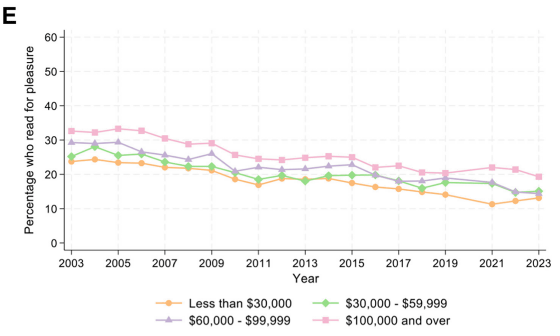
The difference between 'people living in rural areas (orange)' and 'people living in urban areas (green)' is small.
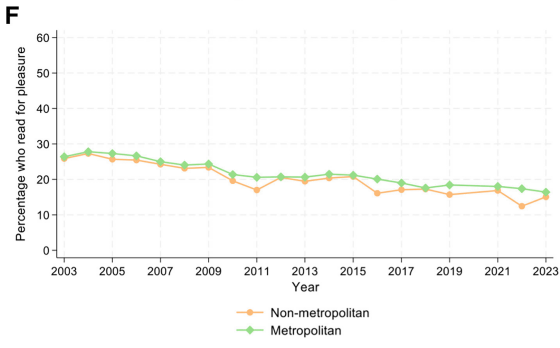
When comparing people without disabilities (orange) with people with disabilities (green), it appears that the reading rate is slightly higher for people without disabilities.
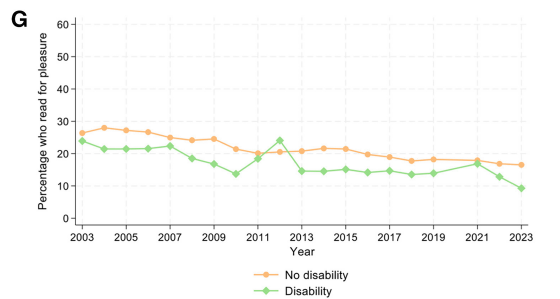
Professor Daisy Fancourt, a member of the research team, said, 'The decline in the number of people reading is a worrying development,' and suggested measures to increase the number of people reading, such as reading with children, making local libraries attractive and accessible, organizing book clubs, and making reading a social rather than isolated activity.
Related Posts:
in Science, Posted by log1o_hf







